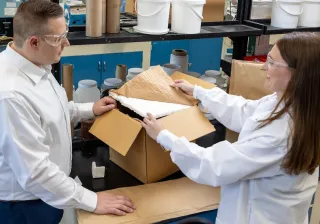Direct evaluation of protein production in living cells is not easy, and most evaluations are done via indirect evaluation - for example by breaking the cells open or via reporter genes. At VTT, we decided to explore the possibilities to evaluate protein production and the quality of the protein within living cells in real time.
We approached the challenge with time-gated Raman Spectroscopy, a VTT-patented solution which is now commercially available by Timegate instruments Oy, because it can “see” into the cells without hindering the processes within and thus evaluate the protein production process.
We focused on evaluating two pharmaceutically relevant proteins: human heat shock protein 70 and human ciliary neurotrophic factor. In the end we showed how powerful tool time-gated Raman spectroscopy is to evaluate protein production and correct folding within living Escherichia coli cells during cultivation.
Our method is useful for researchers and protein producers. The benefits are that protein production processes can be monitored in real-time, without labels, and without disturbing the process. In addition, the measurement is a true reflection of the protein quality and production rates during production.
Currently we are evaluating protein unfolding with time-gated Raman spectroscopy to identify molecular descriptors for protein unfolding and aggregation, which can be added as another quality parameter of protein production, but also to evaluation protein products (e.g. pharmaceuticals, food, vaccines) during storage without direct sampling.
Additional studies are needed to combine TG-Raman spectroscopy with other techniques to boost the synthetic biology revolution the plant so desperately needs.
If you are interested in learning more about our study, please take a look at our article in Nature Scientific Reports: Assessment of recombinant protein production in Escherichia coli with Time-Gated Surface Enhanced Raman Spectroscopy (TG-SERS) https://www.nature.com/articles/s41598-020-59091-3





